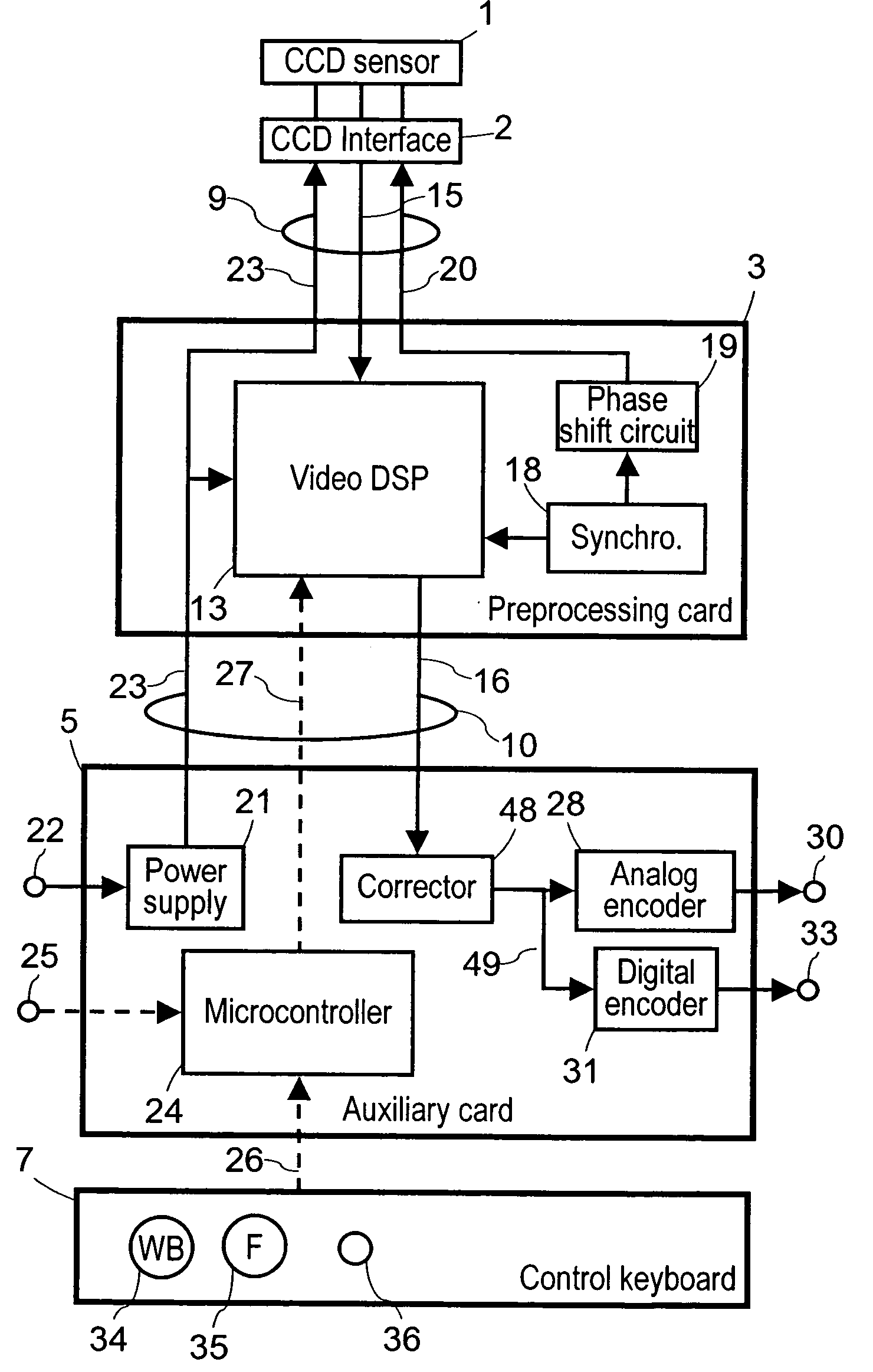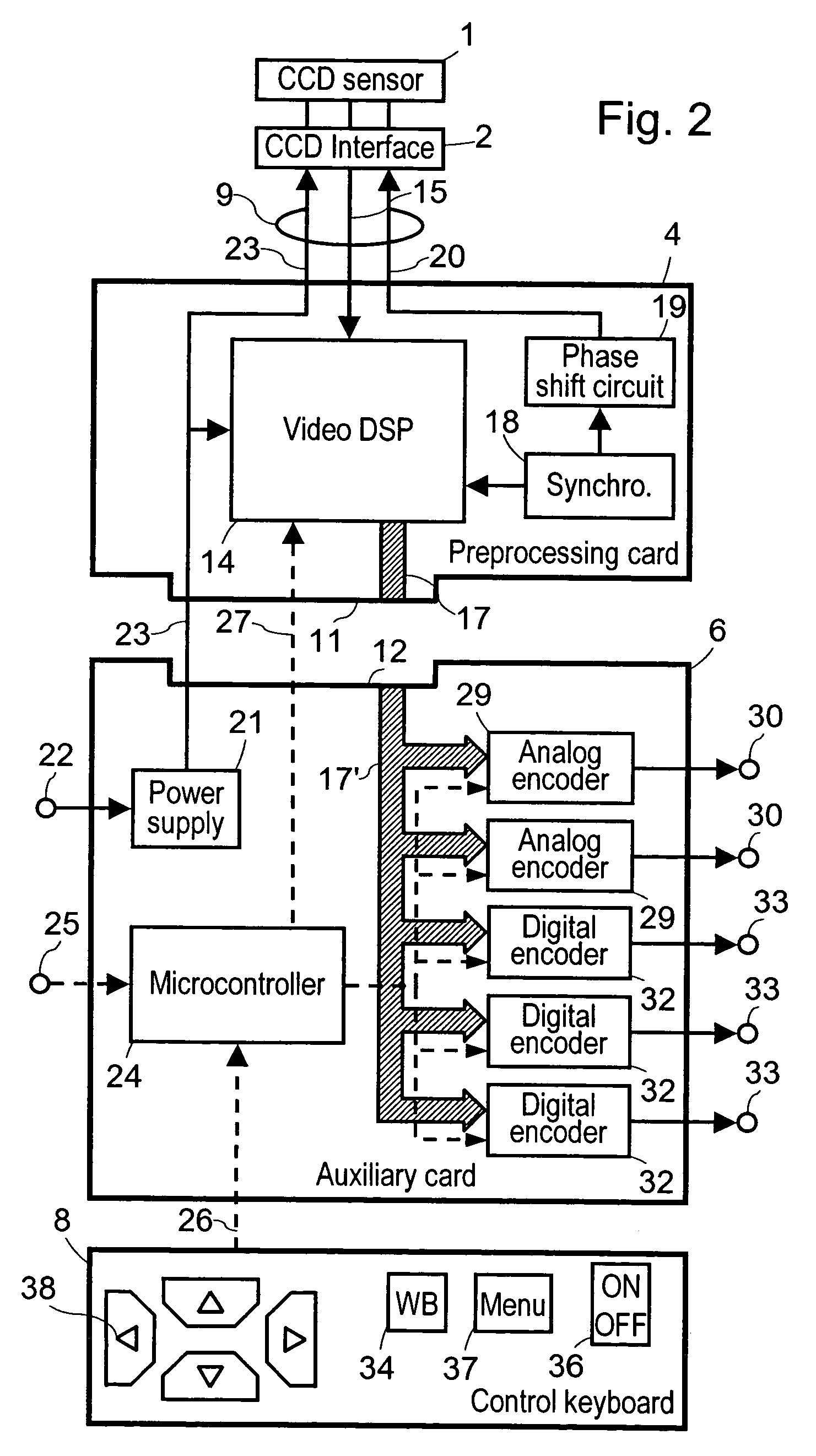Video processor for endoscopy
a video processor and endoscope technology, applied in the field of video processors for endoscopes, can solve problems such as compatibility problems, adaptation problems, and inability to accept phase shifts at the processor, and achieve good immunity to interferen
- Summary
- Abstract
- Description
- Claims
- Application Information
AI Technical Summary
Benefits of technology
Problems solved by technology
Method used
Image
Examples
Embodiment Construction
[0082] This invention is designed to integrate a video processor into a small videoendoscopic probe or endoscopy camera.
[0083] This objective is achieved by physically separating the signal processing functions themselves from the auxiliary functions of a video processor on two cards connected to each other through an electrical link. The card on which the signal processing functions are implanted is as small as possible so that it can fit into an endoscopy camera head or into the control handle of a videoendoscopic probe.
[0084] The first of these two cards is connected to the CCD sensor through an electrical link in which there is no risk of a break in the continuity. It is intended to be housed as close as possible to the CCD sensor and therefore preferably either in the handle of a videoendoscopic probe or in the head of an endoscopy camera. To achieve this, and in order to minimize its size, it only contains the minimum electronic means necessary to perform the following funct...
PUM
 Login to View More
Login to View More Abstract
Description
Claims
Application Information
 Login to View More
Login to View More - R&D
- Intellectual Property
- Life Sciences
- Materials
- Tech Scout
- Unparalleled Data Quality
- Higher Quality Content
- 60% Fewer Hallucinations
Browse by: Latest US Patents, China's latest patents, Technical Efficacy Thesaurus, Application Domain, Technology Topic, Popular Technical Reports.
© 2025 PatSnap. All rights reserved.Legal|Privacy policy|Modern Slavery Act Transparency Statement|Sitemap|About US| Contact US: help@patsnap.com



